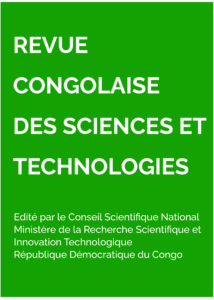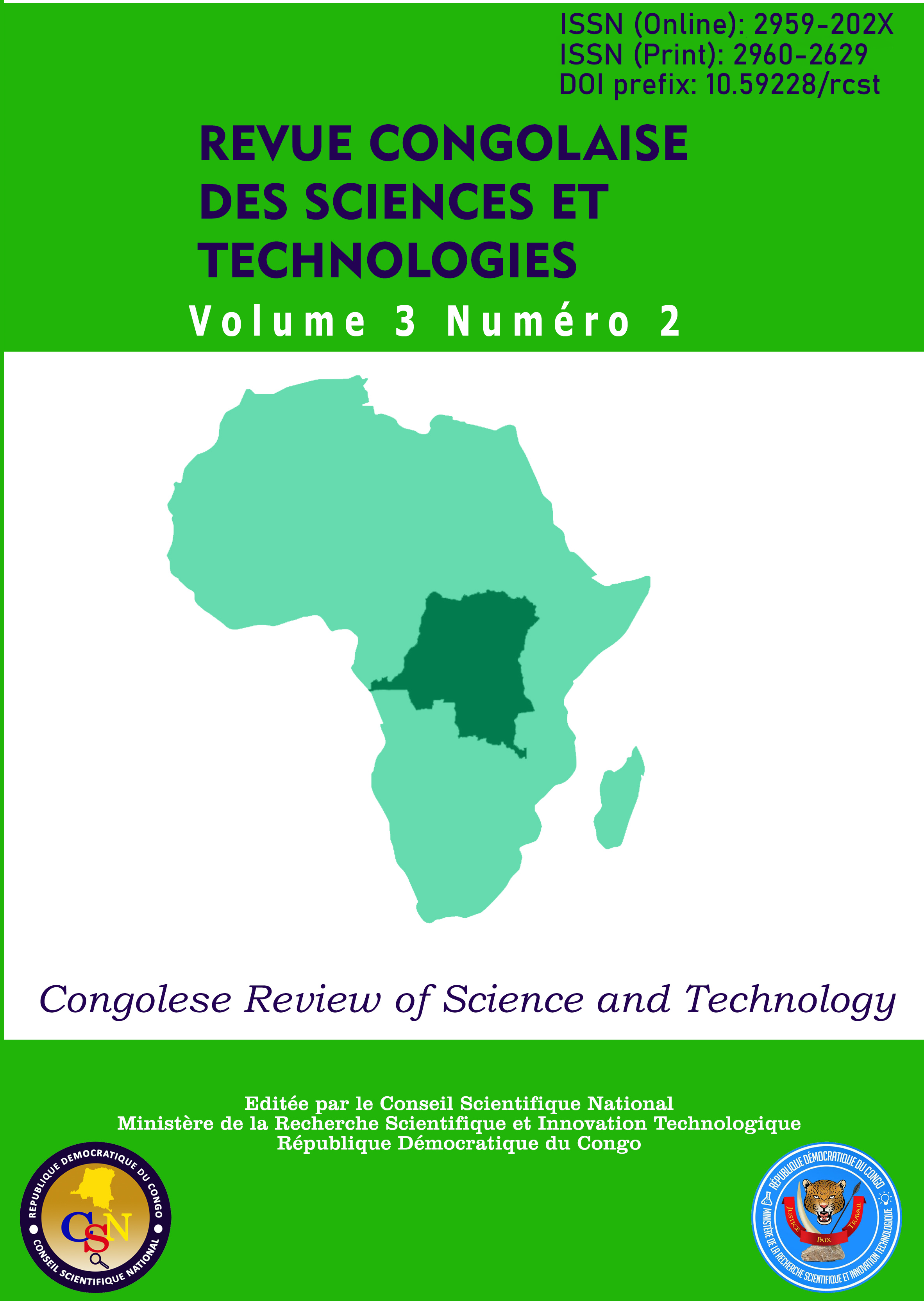In silico evaluation of the toxicological profile of some molecules isolated from Aloe vera and watermelon (Citrullus lanatus) used in the formulation of sunscreens
Main Article Content
Abstract
Medical Cutaneous pharmacokinetics and toxicology are important in cosmetology, because the harmful effects of ultraviolet
light require external photoprotection, such as sunscreens containing sunscreens. However, some of these compounds are
toxic to the skin. As a result, natural plant-based products are increasingly being studied for their low toxicity. This study used
bioinformatics tools to assess the toxicity of six molecules, three from Aloe vera and three from watermelon. With the
exception of lycopene, all the molecules have a good toxicological profile. Computational approaches are presented are
presented as rapid and inexpensive tools for making predictions basis for future experimental studies.
Article Details

This work is licensed under a Creative Commons Attribution-NonCommercial-ShareAlike 4.0 International License.
References
Ahmed, H.M & Nasr Eldin, M.S. (2023). Aloe Vera
for Protects Skin Tissues from The Damaging
Impacts of Ultraviolet Radiation. International
Journal of Advanced Medical Sciences and
Technology (IJAMST), 3(4), 7-11.
Anitha, T. (2012). Medicinal Plants used in Skin
protection. Asian Journal of Pharmaceutical,
Clinical Research, 5(3), 35-38.
Apalla, Z., Nashan, D., Weller, R.B. (2017). Skin
Cancer: Epidemiology, Disease Burden,
Pathophysiology, Diagnosis, and Therapeutic
Approaches. Dermatol. Ther, 7, 5–19.
Cerqueira, N.M., Gesto, D., Oliveira, E.F., SantosMartins, D., Bras, N.F., Sousa, S.F. (2015)
Receptor-based virtual screening protocol for
drug discovery. Arch. Biochem. Biophys, 582,
–67.
Daina, A., Olivier, M., Zoete, V. (2017).
SwissADME: a free web tool to evaluate
pharmacokinetics. druglikeness and medicinal
chemistry friendliness of small molecules.
Scientific Reports, 7, 42717.
Downs, C.A., DiNardo, J.C., Alice, D.S., Rodrigues
M.S., Lebaron, P. (2021). Benzophenone
Accumulates over Time from the Degradation
of Octocrylene in Commercial Sunscreen
Products. Chem. Res. Toxicol, 34(4), 1046–
D’Orazio, J., Jarrett, S., Amaro-Ortiz, A., Scott, T.
(2013). UV Radiation and the Skin.
International Journal of Molecular Science, 14,
–12248.
Gleeson, M.P. (2008). Generation of a set of simple,
interpretable ADMET rules of thumb. Journal
of Medicinal Chemistry, 51(4), 817–834.
Habrant, D. (2008). Synthèse et caractérisation de
nouveaux antioxydants, dérivés monoaromatiques d’acides pulviniques, pour des
applications en dermo-cosmétique [Thèse de
Doctorat, Institut Gilbert Laustriat, Université
Louis Pasteur].
Hughes, J.D., Blagg, J., Price, D.A., Bailey, S.,
DeCrescenzo, G.A., Devraj, R.V. (2008).
Physiochemical drug properties associated with
in vivo toxicological outcomes. Bioorg. Med.
Chem. Lett, 18(17), 4872–4875.
Kasende, O.E., Matondo, A., Muya, J.T., Scheiner, S.
(2017). Interactions between temozolomide and
guanine and its S and Se-substituted analogues.
International Journal of Quantum Chemistry,
(3), 157–169.
Lipinski, C.A. (2000). Drug-like properties and the
causes of poor solubility and poor permeability.
J. Pharmacol. Toxicological. Meth, 44(1), 235–
Ma, J., Wang, Z., Qin, C., Wang, T., Hu, X, Ling W.
(2023). Safety of benzophenone-type UV filters:
A mini review focusing on carcinogenicity,
reproductive and developmental toxicity.
Chemosphere, 326, 138455.
Matondo, A., Dendera, W., Isamura, B.K, Ngbolua,
K.N., Mambo, H.V.S., Muzomwe, M., Mudogo,
V. (2022). In silico Drug Repurposing of
Anticancer Drug 5-FU and Analogues Against
SARS-CoV-2 Main Protease: Molecular
Docking, Molecular Dynamics Simulation,
Pharmacokinetics and Chemical Reactivity
Studies. Advances and Application in
Bioinformatics and Chemistry, 15(2), 59–77.
Mbanga, L., Lenghomo, L., Ngoy, P., Lundemba,
A.S., Zuka, M., Ngbolua, K.N., Mpiana, P.T.
(2023). Antioxidant Properties of Some Plants
Extracts Used As Natural Sunscreen in the
Formulated Cream. Revue Congolaise des
Sciences et Technologie, 2(1), 185–190.
Medici, A., Luongo G., Di Fabio G., Zarrelli, A.
(2022). Environmental Fate of Organic
Sunscreens during Water Disinfection
Processes: The Formation of Degradation ByProducts and Their Toxicological Profiles.
Molecules, 27(14), 4467.
Mvondo, J.G.M., Matondo, A., Mawete, D.T.,
Bambi, S.M.N., Mbala, B.M., Lohohola, P.O.
(2021). In silico ADME/T properties of quinine
derivatives using SwissADME and pkCSM
webservers. International Journal of Tropical
Disease and health, 42(11), 1–12.
Ngbolua, K. N., Kilembe, J. T., Matondo, A.,
Ashande, C. M., Mukiza, J., Nzanzu, C. M.,
Ruphin, F. P., Baholy, R., Mpiana, P. T., &
Mudogo, V. (2022). In silico studies on the interaction of four cytotoxic compounds with
angiogenesis target protein HIF-1α and human
androgen receptor and their ADMET properties.
Bulletin of the National Research Centre, 46(1),
-12.
Pires, D.E., Blundell, T.L., Ascher, D.B. (2015).
pkCSM: Predicting small-molecule
pharmacokinetic and toxicity properties using
Graph-Based Signatures. Journal of Medicinal
Chemistry, 58(9), 4066–4072.
Ramos, S., Homem, V., Alves, A., et al. (2016). A
review of organic UV-filters in wastewater
treatment plants. Environ. Int, 86, 24-44.
Waring, M.J., Arrowsmith, J., Leach, A.R., Leeson,
P.D., Mandrell, S., Owen, R.M. et al. (2015).
An analysis of the attrition of drug candidates
from four major pharmaceutical companies.
Nat. Rev. Drug Discov, 14(7), 475–486.
Xiong, G., Wu, Z., Yi, J., Fu, L., Yang, Z., Hsieh, C.
et al. (2021). ADMETlab 2.0: An integrated
online platform for accurate and comprehensive
predictions of ADMET properties. Nucleic
Acids Research, 49, W5-W14 (Web Server
Issue).

